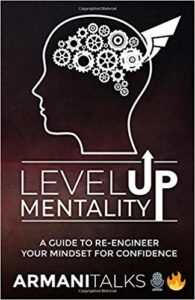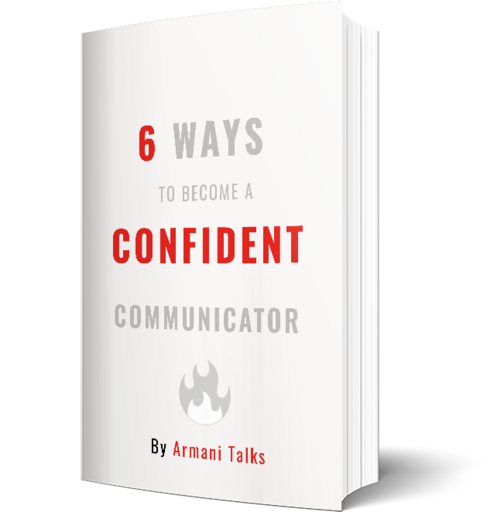How to Tell a Story in a Conversation
A conversation can turn mechanical at times.
When both parties are just going thru the movements.
Easy trap to fall into.
Mechanical movements and social skills do not go well together.
Be too mechanical and you risk being boring.
How can one circumvent this ill fate?
Thru storytelling.
Storytelling in a conversation can speed up rapport.
It can breathe life into an interaction that was on the verge of dying.
And it’s a skill set that anyone can add to their arsenal.
If you are a person with experiences that has at least 1 friend.
Then this article is for you.
2 of the Most Important Words in Storytelling
Before we talk about how to tell a story in a conversation…
Let’s define a story real quick so we are on the same page.
What the hell is it?
A story is a connection of ideas.
That’s the most fundamental definition.
With this fundamental definition, we can operate with creativity while maintaining some structure.
Can you tell me what is the most important word in storytelling?
‘I have no clue man.’
It’s resonation.
Resonation is when someone FEELS your words.
Picture your favorite movie.
This movie maybe made you cry a lot.
Or made you laugh a lot.
Something about this story resonated with your internal world.
Could have even been the intricate plot.
That’s the most important word: Resonation.
Can you guess what the second most important word is?
‘No clue man.’
Damn bro, you’re no fun.
It’s curiosity.
And we want to talk a bit about this word.
The Element of Curiosity
Resonation is the reward.
If you do your job correctly, then the other person will feel.
Rather than focusing on the reward, let’s talk about what SETS UP the reward.
And that’s curiosity.
Curiosity is defined as the intense desire to know.
And it’s the goal of the storyteller to generate that sense of awe.
How does one set themselves up to build that sense of awe?
By understanding the Law of Closure.
The Law of Closure is when a person wants to close the gaps in missing information.
The desire to close the gaps will have them listening intensely or doing a bunch of research.
- Our goal is to make them listen intensely.
Give them some information.
But don’t give them all the information, yet.
How to Spark Curiosity
‘I see what you’re saying about curiosity. But I don’t think I can execute this intense desire to make someone know.’
Have you ever been an asshole before?
‘What?’
Have you ever been the guy who told a friend that you heard something about them, but wouldn’t tell them what it was?
‘Now that I think about it.. yes.’
Well, then you generated curiosity.
This act of withholding a secret created an INTENSE desire to know within the other person.
Let’s say you withheld the secret for 3 months.
Then 3 months in, you are finally ready to tell the guy.
This guy may be the worst listener out there.
But when you tell him this secret, he will actively listen.
For 2 hours if need be.
2 great ways to spark curiosity are:
-Trace back to when you sparked someone’s curiosity. Like the example above.
-Make yourself aware of when you’re curious.
‘That’s it? You are not going to give me a step-by-step plan of how to hook someone?’
No.
Because that makes the storyteller too mechanical.
It gets them too outcome-focused rather than process-focused.
Storytelling is one of the fields where the process needs to be mentally enriching for the information to be mentally enriching for the other person.
By the way…
Curiosity is primal.
It’s not learned best with intellect.
It’s learned best with introspection.
The Art of Simplicity
After making yourself aware on the field of curiosity, ideas will present themselves.
Plus, the curious element makes the storyteller a better listener.
Storytelling comes down a lot to listening.
Being aware of which information will appeal to someone & which will not.
You can have the greatest story for engineers.
But that will not appeal to doctors.
A story that works on 1 person may not work on another.
Ideas present themselves to the curious mind.
When the idea is presented, give yourself less time to plan.
Get the person’s attention, say that you have a story…
And begin.
Go with the intention of being simple.
‘And?’
Just go in with the intention of being simple and getting the thought from point A to point B.
Point A being your mind.
Point B being the other person’s mind.
Vibes Beat Details
If you’ve noticed, there hasn’t been too much step by step processes in this article.
In terms of storytelling, step by steps can work well with writing, building a speech, and recording videos.
But with learning how to tell a story in a conversation?
Too many step by steps can make you awkward.
And leads to overthinking.
- Curiosity to build a connection with the other person.
- More curiosity to have ideas presented to you.
- And then just deliver that idea in a simple way.
In terms of most self-improvement spaces, the goal is to learn how to begin something.
Quit procrastinating and start.
In terms of storytelling, the goal is to learn how to end something.
Quit rambling and end.
There is no formula for a story in terms of a conversation.
It just comes down to another flow of talking points that relate to the conversation.
The conflict & resolution present themselves the more aware you are of the character.
‘Who is the character?’
You.
No one taught you how to gossip.
Yet, you can do it seamlessly.
In terms of storytelling in a conversation setting, it’s not a game of learning.
It’s a game of feeling.
To learn how to tell a story in a conversation, focus on curiosity first.
And the reward of resonation comes.
Practice with a Friend
To try this out for yourself, get a friend.
Call them or hang out with them in person.
And make it a goal to tell 1 story in the interaction.
As stated earlier, planning too much can kill the vibe.
So rather than planning out exactly when you are going to tell a story…
Let it appear.
Maintain curiosity and allow the conversation material to indicate to you when a story idea has appeared.
This feeling normally tingles in the body & it’s even more noticeable when there is silence in the conversation.
Now go in with the intention of turning that idea into words and transferring it into the listener’s ears.
The more present you were in the conversation, the more the idea that is being presented suits them in the conversation.
Keep the talk simple.
Efficient.
This leads to more bandwidth for a smooth voice, comfortable body language & most importantly, joy.
Joy makes storytelling effortless.
And joy cannot appear when too much planning is taking place.
The level of presence, met with curiosity & simplicity will ultimately lead to the coveted word:
Resonation.
For more practical communication insights, subscribe to my free daily newsletter.
– ArmaniTalks 





